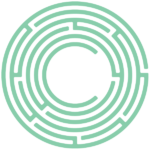Johannesburg-based ‘The Bloody Horse’ was a periodical that focused on writing and the arts in South Africa during the early ’80s. The publication came into being as a result of a conversation among Patrick Cullinan, Lionel Abrahams, and Chris Hope during the 1974 Poetry Conference in Cape Town. Notably, Abrahams’ influential magazine, ‘The Purple Renoster,’ had closed down, which was massively underrated for its time, and he was open to new opportunities. The main topic of discussion during this conversation was actually about starting Bateleur Press and publishing relevant books of poetry, rather than creating another little magazine. At that time, Contrast, Izwi, New Coin, Staffrider, and Ophir were still thriving
Despite the high cost, time requirements, and the high fatality rate of all little magazines at the time, the group made the decision to publish the The Bloody Horse. Even though only six issues were produced between 1980 and 1981, it played a pivotal role in the establishment of Bateleur Press. In contrast to the mid-70s, in some small way, The Bloody Horse contributed to fostering an environment in which there were at least four publishers keeping the literary field alive in South Africa. These publishers included Ravan, Mantis, Donker, and Bateleur, all of whom regularly published South African verse and provided writers across the country with a platform.
The title, ‘The Bloody Horse,’ alludes to South African poet Roy Campbell’s poem ‘On Some South African Novelists’ and underscores the founders’ belief that literature could play a role in South African political discourse. The response to the editors’ call for contributors was impressive. Ampie Coetzee, a key member of the Afrikaans literary establishment, was invited to join the editorial board, alongside Peter Strauss in Durban and Mark Swift in Cape Town. Chris Hope and Sheila Roberts contributed their respective efforts from abroad. Importantly, Lawrence Herber and his wife Avril, Paul Stopforth, and many others lent their skills, without whom the Arts section would likely not have been as relevant. Chris Russell, the former editor of National Student, also joined the team.









